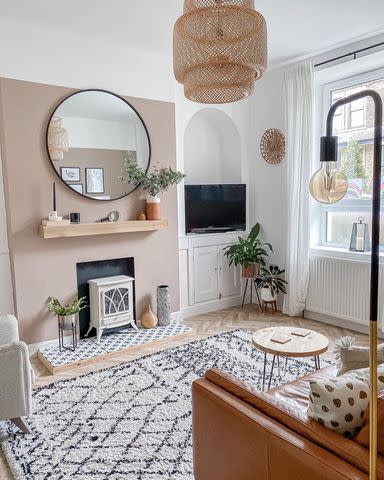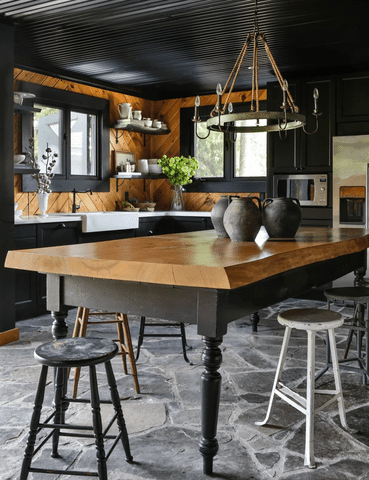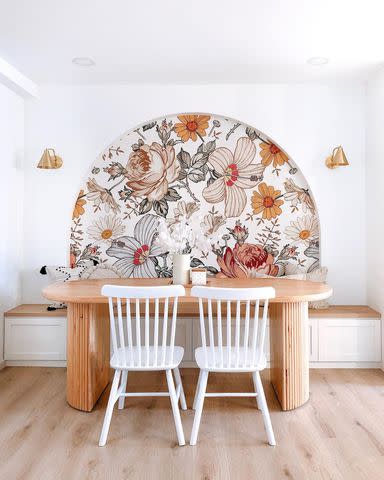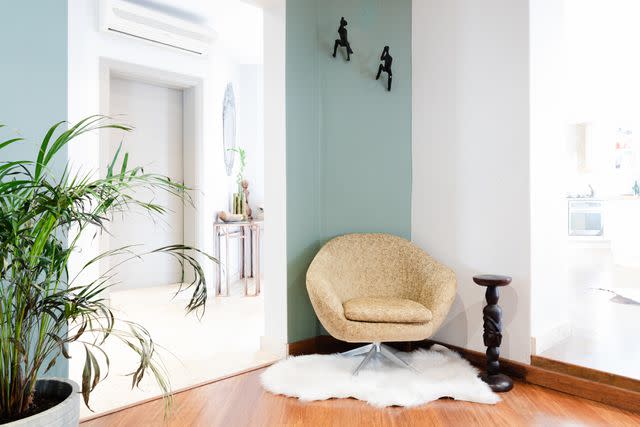How to Choose an Accent Wall: Essential Dos and Don’ts
Reviewed by Deane BiermeierFact checked by Emily Estep
The hardest part of adding a pop of color or visual feature to a room is choosing the accent wall you want to spruce up.
Accent walls are popular in living rooms and bedrooms, but you can also have one in a bathroom, kitchen, hall, home office, or even on your home's exterior.
Accent walls can change the size, shape, and feel of a room depending on the wall and color you choose. You have unlimited paint options for your accent wall, as well as other surfaces and materials.
Here's how to choose an accent wall that'll shine in your space.
What Is an Accent Wall?
An accent wall is an interior or exterior wall that can have a different color, shade, design or material from the other walls around it.
How to Decide Which Wall to Make the Accent Wall
To decide which wall you want to make an accent wall, take a step back and look at the room as a whole to see which walls first grab your attention, built-in room features, and any existing focal points.
Choose a wall that you want to stand out or become a focal point. This is often the wall or area that first grabs your attention when you step inside.
Look for an architectural feature that can benefit from an accent wall, especially one with texture such as a fireplace, brick wall, or built-in bookcase. An accent wall will further highlight that feature.
Avoid choosing a wall that isn't symmetrical, such as one whose shape is impacted by a slanted ceiling. If you choose a wall in a room with a slanted roof, you could inadvertently highlight the part of the ceiling that abuts the wall.
You can choose a wall that has windows as your accent wall, but be mindful that a dark accent color surrounding windows can create a bright light effect and overwhelm the room.
Tips for Styling Accent Walls
Think Beyond Solid Colors

While solid colors are certainly a strong option, patterns can make your accent wall into a standout feature.
Your accent wall may be perfect for stripes, ombré, or for a specialty paint finish. Metallic wall finishes are powerful style statements for an accent wall.
Wallpapers and peel and peel-and-stick murals are great if you want a more intricate design.
Don't Forget About Texture

In addition to changing the color of an accent wall, you can also change the texture. Consider using stone or tile.
A wood accent wall is one of the easiest textured options, thanks to beadboard, board and batten, paneling, and decorative wood finishes.
Brick veneer can be added, or you can turn one brick wall into an accent wall with limewashing, which calcifies the brick's surface.
Extensive shelving or cabinetry can also work as an accent wall in a room that lacks an architectural feature and storage.
Your accent wall could be a densely packed gallery of photos or artwork, or even a fabric-draped wall. Add a wall-mounted electric fireplace on an accent wall for a texture and color addition.
Add Accent Walls in Neutral Rooms

You should still consider an accent wall even if you're keeping your room neutral. Accent walls can work just as well in a neutral color as they do in bright hues. An accent wall conjures up visions of bright red or blue, but in a neutral color scheme, a cinnamon brown wall is just as dramatic.
Don't Shy Away from Bold Colors

You can add a bold color to a room and not have it dominate the space so long as you are purposeful in your choices.
A very dark or black accent wall won't catch as much light (and steal your attention) if it has a matte finish.
Counterbalance the bold color on the wall by adding that same color or similar shades elsewhere in the room.
For a bright orange wall, add in some burnt orange throw pillows, yellow coffee table books, and a neon orange planter.
As long as you have the right accents around the room to coordinate with your new color, you can choose whatever color makes you happy.
Consider the Other Wall Colors

Take into account the color of your other walls. Most accent walls look best when they adjoin walls in a light to medium shade. Accent walls in an all-white room are stunning but tricky.
The contrast of a bright accent wall against white walls can look very modern and even stark. Balance your strong accent wall color with neutral wall colors on the other walls.
Your neutral walls can be gray, beige, or a toned-down version of more vibrant colors—whatever works best with your accent color.
If you do choose to accent a wall in a white room, soften the contrast with mid-tone accent colors to bridge the difference.
A room that is already a dark color could have another analogous dark color or a patterned wallpaper as the accent wall color. While you can choose a very light color, it will stand out starkly in the room.
Don't Just Think About Walls

The ceiling can be your accent wall. Accent ceilings can be created with soft colors or even vivid colors, either by adding paint or wallpaper. White crown molding helps separate the wall color from the ceiling and creates a stylish look.
Tip
Turn a nook or cut-out area in a wall, such as a window seat or banquette, into an accent wall either by exclusively changing the area within the cut-out, just the larger wall that it's on, or both.
Consider Wallpaper

Common wallpaper is a gorgeous choice for accent walls. The latest temporary wallpapers can give you a designer look without a long-term commitment.
Look for wallpaper with pretty designs and colors for a chic style. For renters, temporary wallpaper is a clever way to personalize your home.

The Spruce / Michelle Becker
Rules for Designing an Accent Wall
Though accent walls are certainly an opportunity to have some fun, following a few key design rules will result in the best result.
The color of the accent wall should be present in the room's decor to integrate the wall into the space. Be careful not to go overboard, as too much of the same color will make the room look monochromatic.
Accent walls should support existing focal points you want to preserve, not create a battle for attention.
Don't put an accent wall on a wall you don't want to accentuate. It won't cover up any imperfections in the wall or strangeness in the shape or decor.
Choose a color for your accent wall because it works with your space, not because it's trendy. Sage green has been having a moment, but if your room is already painted crimson red, adding in a sage green accent wall will make it look like Christmas year-round.
Frequently Asked Questions
Which wall should be an accent wall in an open concept layout?
In an open concept layout, choose the wall you want to be a focal point as your accent wall. Consider existing built-in features or focal points and how you can support those. If you have a very long and narrow layout, choosing a wall at either end would be preferable to choosing one of large walls, which could make the room look narrower depending on the color or pattern you choose.
Which accent wall will make a room look bigger?
Which accent wall you choose won't affect how big a room looks as much as the color of the accent wall. To use an accent wall to make a room look bigger, look to color and pattern and how it can make something stand out or recede in a room. Light colors open spaces up, while dark colors are more likely to draw your attention.
Should accent walls be lighter or darker than the rest of the room?
Whether an accent wall should be lighter or darker than the rest of the room depends on how you want to shift attention in the room. A lighter accent wall is more likely to open up the space, and a darker color is more likely to either draw your attention or make something recede into the background depending on what's being painted.
Can you make multiple walls into accent walls?
You can make multiple walls into accent walls, but they will compete for your attention. However, you can change the feel of your space with multiple accent walls. Two accent walls sharing a corner or three walls create a zone, but two accent walls on opposite walls will make your space feel narrower or larger depending on the sizes of the walls.
25 Creative DIY Accent Wall Ideas to Try at Home
Read the original article on The Spruce.
